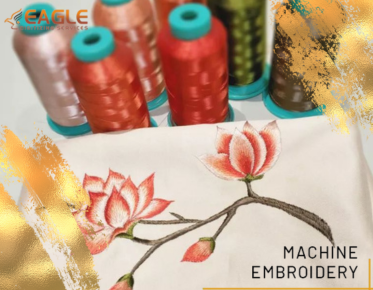Embroidery Stabilizer: A Complete Guide
Embroidery is a beautiful art form that combines creativity with precision. However, achieving the perfect stitch requires more than just a skilled hand and a quality embroidery machine. One of the unsung heroes in the embroidery process is the embroidery stabilizer. This guide will delve into the world of embroidery stabilizers, exploring their types, uses, and benefits.
Understanding Embroidery Stabilizers
Embroidery stabilizers are essential materials used to support fabric during the embroidery process. They prevent the fabric from puckering, stretching, or distorting, ensuring that the design remains crisp and clear. Stabilizers come in various forms, each suited to different types of fabric and embroidery techniques.
Types of Embroidery Stabilizers
There are several types of embroidery stabilizers, each with unique properties and applications. The main categories include:
- Cut-Away Stabilizers: These are permanent stabilizers that remain on the fabric after the embroidery is complete. They are ideal for knit fabrics and designs with high stitch counts.
- Tear-Away Stabilizers: As the name suggests, these stabilizers can be torn away after the embroidery is finished. They are suitable for woven fabrics and less dense designs.
- Wash-Away Stabilizers: These dissolve in water, making them perfect for delicate fabrics and projects where the stabilizer must be completely removed.
- Heat-Away Stabilizers: These are removed by applying heat, making them ideal for fabrics that cannot be washed or torn.
Choosing the Right Stabilizer
Selecting the appropriate stabilizer depends on several factors, including the type of fabric, the complexity of the design, and the desired finish. For instance, a cut-away stabilizer is best for stretchy fabrics, while a tear-away stabilizer works well with stable fabrics.
Using Embroidery Stabilizers
Proper use of stabilizers is crucial for achieving professional results. Here are some tips for using stabilizers effectively:
- Hooping: Ensure that both the fabric and stabilizer are hooped tightly to prevent shifting during embroidery.
- Layering: For intricate designs, consider using multiple layers of stabilizer for added support.
- Testing: Always test your stabilizer on a scrap piece of fabric to ensure compatibility and desired results.
Benefits of Using Embroidery Stabilizers
Embroidery stabilizers offer numerous benefits, including:
- Improved Stitch Quality: Stabilizers provide a stable base, resulting in cleaner, more precise stitches.
- Fabric Protection: They prevent fabric distortion and puckering, preserving the integrity of the material.
- Design Versatility: With the right stabilizer, you can embroider on a wide range of fabrics, from delicate silks to sturdy denims.
Embroidery Digitizing and Stabilizers
Embroidery digitizing is the process of converting artwork into a digital file that an embroidery machine can read. This process is crucial for achieving high-quality embroidery designs. Companies like Eagle Digitizing specialize in embroidery digitizing services, ensuring that designs are optimized for machine embroidery.
Why Choose Professional Digitizing Services?
Professional digitizing services offer several advantages, including:
- Expertise: Skilled digitizers understand the intricacies of embroidery and can create designs that minimize thread breakage and maximize stitch quality.
- Efficiency: With professional services, you can expect quick turnaround times and high-quality results.
- Customization: Services like Eagle Digitizing offer customized solutions tailored to your specific needs, whether it's for a left chest logo or a full jacket back design.
Future of Embroidery Stabilizers
As technology advances, the future of embroidery stabilizers looks promising. Innovations in materials and techniques are likely to enhance the performance and versatility of stabilizers, making them even more integral to the embroidery process. As the industry evolves, staying informed about the latest developments will be key to maintaining high-quality embroidery work.
In conclusion, embroidery stabilizers are a vital component of the embroidery process, offering support and enhancing the quality of the final product. By understanding the different types of stabilizers and their applications, you can ensure that your embroidery projects are successful and professional-looking. As you explore the world of embroidery, consider the role of stabilizers and how they can elevate your craft to new heights.



